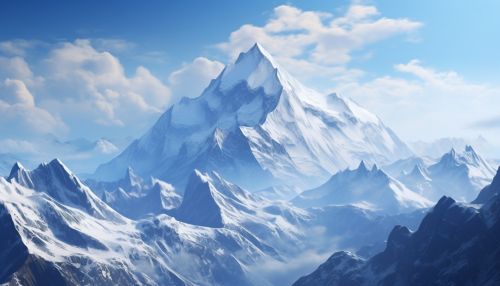Mount Kazbek
Geography
Mount Kazbek, located in the eastern part of the Caucasus Mountains, is one of the major mountains of the region. It stands at an elevation of 5,047 meters, making it the third highest peak in Georgia, and the seventh highest in the Caucasus. The mountain is located in the Kazbegi District of Georgia, close to the border with Russia. The Gergeti Glacier descends from the summit, and the mountain is predominantly composed of volcanic rocks, specifically andesite and dacite.


Geology
Mount Kazbek is a potentially active stratovolcano, built up of alternating layers of lava flows, ash, and other volcanic debris. The mountain's geological history is complex, with the earliest volcanic activity dating back to the Miocene epoch. The most recent eruption occurred approximately 6000 years ago, and there is ongoing geothermal activity, including hot springs and fumaroles, particularly in the area of the Kazbegi fault.
Climbing History
Mount Kazbek has a rich history of mountaineering. The first recorded ascent was in 1868 by a British expedition led by Douglas Freshfield, accompanied by the Swiss guide François Devouassoud. Since then, it has become a popular destination for climbers, with its northern and southern routes offering different levels of difficulty and unique challenges. The southern route is considered the standard route, starting from the village of Stepantsminda and passing by the Gergeti Trinity Church.
Flora and Fauna
The lower slopes of Mount Kazbek are covered with alpine meadows and forests of birch and pine. The region is home to a variety of wildlife, including the Caucasian tur, chamois, and lynx. Bird species such as the golden eagle, griffon vulture, and Caucasian snowcock can also be spotted. The higher altitudes are characterized by alpine tundra, with a unique assemblage of plant species adapted to the harsh conditions.
Cultural Significance
Mount Kazbek holds a significant place in Georgian folklore and mythology. It is often identified as the location where Prometheus was chained for stealing fire from the gods, according to Greek mythology. The mountain is also associated with Amirani, a hero from Georgian mythology similar to Prometheus. The Gergeti Trinity Church, located near the mountain, is a notable landmark and an important symbol of Georgia's Christian heritage.
